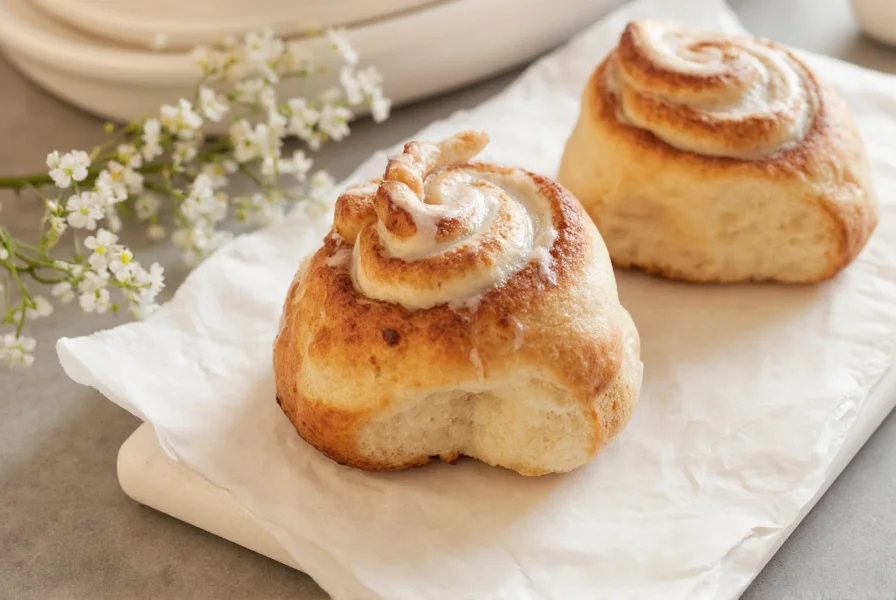Cinnamon roll bunnies have become a beloved Easter tradition in many households, transforming ordinary cinnamon rolls into charming holiday-themed treats. These creative pastries combine the familiar comfort of cinnamon rolls with playful bunny shapes that delight both children and adults during spring celebrations.
The Origins of Cinnamon Roll Bunnies
While traditional cinnamon rolls date back to Swedish "kanelbulle" pastries, the bunny-shaped variation emerged as a seasonal adaptation in American baking culture. Food bloggers and home bakers began experimenting with dough shaping techniques around 2010, with the concept gaining significant popularity through social media platforms. The technique perfectly aligns with Easter traditions, offering a sweet alternative to chocolate bunnies that families can make together.
Essential Ingredients for Perfect Cinnamon Roll Bunnies
Whether you're using store-bought or homemade dough, these ingredients create the foundation for successful cinnamon roll bunnies:
| Ingredient | Purpose | Substitution Options |
|---|---|---|
| Cinnamon roll dough | Base structure | Pillsbury canned dough, homemade yeast dough, or vegan alternative |
| Cinnamon-sugar filling | Flavor foundation | Adjust ratio to taste (typically 1:4 sugar to cinnamon) |
| Butter | Moisture and richness | Coconut oil for dairy-free version |
| Icing | Finishing touch | Cream cheese, vanilla, or maple glaze alternatives |
Step-by-Step Shaping Technique
Creating cinnamon roll bunnies requires precise shaping to achieve the distinctive bunny appearance while maintaining structural integrity during baking. Follow these professional techniques for best results:
- Prepare the dough: Roll out your cinnamon roll dough into a large rectangle approximately 12x16 inches
- Create the body: Cut a large oval shape for the main body portion
- Form the head: Cut a smaller oval positioned at one end of the body
- Shape the ears: Cut two long, tapered ear shapes and tuck them into the head portion
- Add details: Use a sharp knife to create subtle facial features and paw shapes
- Final assembly: Carefully transfer the shaped bunny to your baking sheet, ensuring all parts remain connected
Proven Baking Tips for Success
Avoid common pitfalls with these expert-tested recommendations:
- Dough temperature matters: Work with slightly chilled dough for cleaner cuts and better shape retention
- Don't overfill: Excess filling can cause structural issues during baking - use moderate amounts
- Baking time adjustment: Reduce standard cinnamon roll baking time by 2-3 minutes to prevent over-browning of thinner sections
- Cooling technique: Allow bunnies to cool for 10 minutes before applying icing to prevent melting
- Preserve details: Bake at the lower end of recommended temperature range for more defined features
Creative Variations to Try
Elevate your cinnamon roll bunnies with these popular adaptations:
- Mini bunny nests: Create smaller versions and nestle chocolate eggs in the center
- Gluten-free option: Use gluten-free cinnamon roll dough with xanthan gum for better structure
- Vegan adaptation: Substitute dairy ingredients with plant-based alternatives
- Flavor twists: Incorporate orange zest or cardamom into the filling for unique flavor profiles
- Decorative touches: Use piped icing for facial features or edible glitter for special occasions
Serving Suggestions and Storage
Maximize enjoyment of your cinnamon roll bunnies with these presentation tips:
- Serve warm for optimal texture and aroma release
- Pair with coffee, tea, or cold milk for balanced flavor experience
- Create a festive breakfast spread with other Easter-themed pastries
- Store leftovers in an airtight container for up to 3 days
- Reheat in microwave for 10-15 seconds or in oven at 300°F for best results
Frequently Asked Questions
How do you prevent cinnamon roll bunnies from losing their shape during baking?
Chill the shaped bunnies for 15-20 minutes before baking to help them maintain their form. Using slightly cooler dough and avoiding overfilling with cinnamon mixture prevents spreading. Place parchment paper between bunnies on the baking sheet to prevent sticking and distortion during rising.
Can I make cinnamon roll bunnies ahead of time for Easter morning?
Yes, prepare and shape the bunnies the night before, then cover and refrigerate. On Easter morning, remove them from the refrigerator 30 minutes before baking to allow proper rising. This method actually enhances flavor development while saving morning preparation time.
What's the best way to create detailed facial features on cinnamon roll bunnies?
Use a sharp paring knife to gently score facial features before baking. For more defined details, pipe a small amount of reserved dough through a pastry bag with fine tip to create ears, eyes, and nose. Alternatively, add edible decorations like chocolate chips for eyes after baking but before icing sets.
How can I make cinnamon roll bunnies without using canned dough?
Create homemade yeast dough with 3 cups flour, 1/4 cup sugar, 2 1/4 tsp yeast, 1/2 cup warm milk, 1/4 cup melted butter, and 1 egg. Roll into rectangle, spread with butter, cinnamon-sugar mixture, then shape into bunnies. Allow proper rising time (1-1.5 hours) before baking at 350°F for 18-22 minutes.
Why do my cinnamon roll bunnies sometimes come out dry?
Dry cinnamon roll bunnies typically result from overbaking or incorrect flour measurements. Use a kitchen scale for precise flour measurement (120g per cup), check oven temperature with a separate thermometer, and reduce baking time by 2-3 minutes compared to standard cinnamon rolls. Brushing with melted butter immediately after baking also helps maintain moisture.











 浙公网安备
33010002000092号
浙公网安备
33010002000092号 浙B2-20120091-4
浙B2-20120091-4